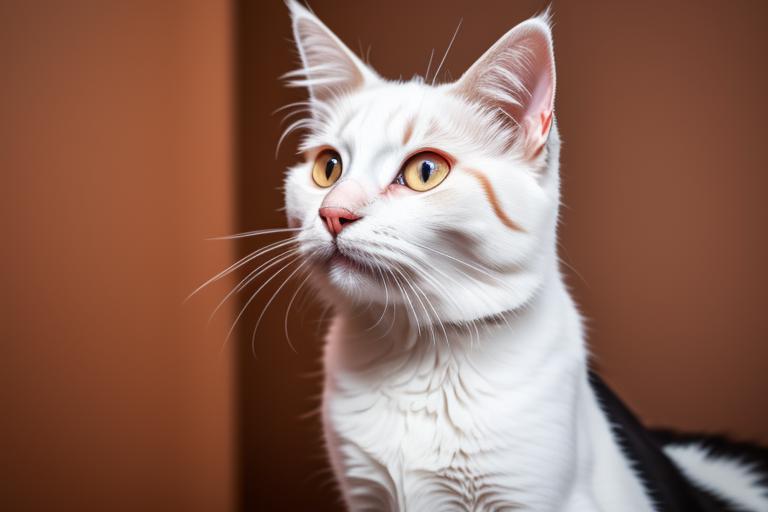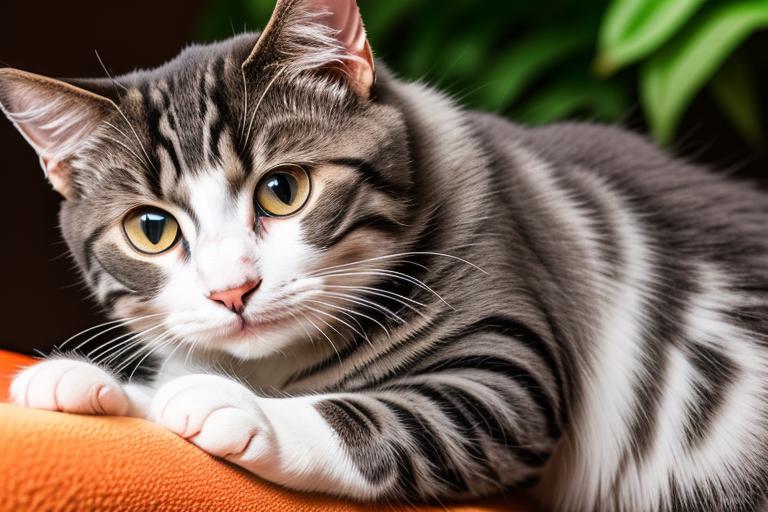You’ve probably heard the saying, ‘Curiosity killed the cat.’ Well, while that may be true in some cases, there’s another threat lurking in the feline world that can cause serious health issues – nasopharyngeal polyps.
These pesky growths can develop in your cat’s nasal passages and throat, causing discomfort and potentially affecting their overall well-being. But don’t worry, in this discussion we’ll explore the causes, symptoms, diagnosis, treatment options, potential complications, and even ways to prevent nasopharyngeal polyps in cats.
So, let’s dive into the fascinating world of feline health and discover how to keep our furry friends safe and happy.
Causes of Nasopharyngeal Polyps
Nasopharyngeal polyps in cats are primarily caused by an overgrowth of cells in the lining of the nasal passages. While the exact cause isn’t fully understood, there are several factors that may contribute to the development of these polyps.
Interestingly, the causes of nasopharyngeal polyps in humans are quite different from those in cats. In humans, these polyps are typically associated with chronic inflammation or infections, whereas in cats, the causes are largely unknown.
One possible explanation for the development of nasopharyngeal polyps in cats is a genetic predisposition. Certain breeds, such as the Siamese and Himalayan cats, are more prone to developing these polyps. Additionally, chronic inflammation of the nasal passages due to allergies or respiratory infections may also play a role.
It is important to note that while treatment options for nasopharyngeal polyps in cats are well-established, they can vary greatly from treatment options in dogs. In dogs, surgical removal is the most common treatment approach. However, in cats, a combination of medical management and surgical intervention is often necessary. Medications such as corticosteroids may be used to reduce inflammation and shrink the polyps before surgical removal is performed.
Common Symptoms in Cats

Are you concerned about your cat’s health?
Nasopharyngeal polyps can cause visible nasal discharge and difficulty breathing in cats. These common symptoms are important to watch out for as they may indicate the presence of a polyp.
Visible Nasal Discharge
If your cat has visible nasal discharge, it’s important to closely monitor their symptoms and seek veterinary attention if necessary. Visible nasal discharge can be a sign of various underlying issues, including chronic sneezing and allergies.
Chronic sneezing in cats can be caused by a variety of factors, such as respiratory infections, irritants, or allergies. Allergies, in particular, can trigger nasal discharge in cats. Common allergens include pollen, mold, dust mites, and certain foods.
If you notice that your cat’s nasal discharge is persistent or accompanied by other symptoms like coughing, sneezing, or difficulty breathing, it’s crucial to consult with a veterinarian. They can help identify the cause of the nasal discharge and recommend appropriate treatment options to alleviate your cat’s discomfort.
Difficulty Breathing
If your cat has visible nasal discharge and is experiencing difficulty breathing, it’s important to seek immediate veterinary attention. Difficulty breathing is a common symptom in cats with nasopharyngeal polyps. These abnormal growths can obstruct the airway, making it hard for your cat to breathe properly. You may notice your cat breathing heavily or rapidly, or they may struggle to take deep breaths. In severe cases, your cat may even gasp for air.
Along with difficulty breathing, cats with nasopharyngeal polyps may also experience difficulty swallowing. The presence of these polyps can cause a sensation of throat obstruction, making it challenging for your cat to eat or drink normally. Additionally, frequent sneezing may occur as a result of the irritation caused by the polyps.
Prompt veterinary attention is crucial to alleviate your cat’s breathing difficulties and ensure their overall well-being.
Diagnosing Nasopharyngeal Polyps
To diagnose nasopharyngeal polyps in your cat, there are several key points to consider.
Firstly, the symptoms and presentation of the polyps are important indicators, such as sneezing, nasal discharge, and difficulty breathing.
Diagnostic imaging techniques, like X-rays or CT scans, can provide further insight into the location and extent of the polyps.
Lastly, a biopsy and histopathology are often necessary to confirm the diagnosis and determine the appropriate treatment plan.
Symptoms and Presentation
When diagnosing nasopharyngeal polyps in cats, veterinarians look for specific symptoms and presentations. One of the key symptoms is nasal obstruction, which can cause difficulty in breathing through the nose. Cats with nasopharyngeal polyps may also exhibit an abnormal head posture, such as tilting their head to one side or holding it in an unusual position. These symptoms are often accompanied by other signs like sneezing, nasal discharge, and difficulty swallowing.
It’s important for veterinarians to carefully observe these symptoms and perform a thorough examination to confirm the presence of nasopharyngeal polyps. Diagnostic tools such as imaging studies, like X-rays or CT scans, may be used to visualize the polyps and determine their size and location.
Once a diagnosis is made, appropriate treatment can be initiated to alleviate the symptoms and improve the cat’s quality of life.
Diagnostic Imaging Techniques
When diagnosing nasopharyngeal polyps in cats, veterinarians utilize diagnostic imaging techniques to visualize the polyps and determine their size and location. These diagnostic tests play a crucial role in accurately diagnosing the condition and guiding treatment options.
Here are the main imaging techniques used:
- Radiography: X-rays can provide valuable information about the presence and location of polyps. However, they may not always provide a clear view of the polyps due to their soft tissue nature.
- Computed Tomography (CT scan): CT scans offer a more detailed and three-dimensional view of the nasal cavity, allowing for better visualization and localization of polyps. This imaging technique is particularly useful in complex cases or when surgery is being considered.
- Magnetic Resonance Imaging (MRI): MRI provides excellent soft tissue contrast and can help determine the extent of the polyps and their relationship with nearby structures. It’s especially useful in assessing the involvement of the brain.
Biopsy and Histopathology
One effective way to diagnose nasopharyngeal polyps in cats is through the use of biopsy and histopathology. Biopsy techniques involve taking a small tissue sample from the polyp for examination under a microscope. This helps to determine the nature of the polyp and rule out other possible conditions.
The histopathological analysis involves studying the tissue sample in detail to identify any abnormal cellular changes or signs of inflammation. This analysis provides valuable information to guide treatment decisions and prognosis.
During the biopsy procedure, the veterinarian may use a flexible endoscope or perform a surgical biopsy if necessary. The collected tissue sample is then sent to a laboratory for histopathological analysis, where specialized pathologists can provide a definitive diagnosis.
Biopsy and histopathology are crucial in accurately diagnosing nasopharyngeal polyps in cats.
Treatment Options for Cats

There are several effective treatment options available for cats with nasopharyngeal polyps. When it comes to treating these polyps, it’s important to consider cat-friendly treatment options and surgical removal alternatives. Here are some treatment options to consider:
- Medical Management: In some cases, medication may be prescribed to help reduce the size of the polyps or alleviate the associated symptoms. Steroids, such as corticosteroids, can help reduce inflammation and shrink the polyps. Non-steroidal anti-inflammatory drugs (NSAIDs) can also be used to manage pain and inflammation.
- Minimally Invasive Procedures: In certain situations, minimally invasive procedures, such as laser therapy, may be considered. This involves using a laser to remove or shrink the polyps without the need for extensive surgery. Minimally invasive procedures can be a good option for cats that aren’t good candidates for surgery or for those with small or easily accessible polyps.
- Surgical Removal: Surgical removal is often the most effective treatment option for larger or more complex polyps. This can involve either traditional surgery or endoscopic procedures. Traditional surgery involves removing the polyps through a small incision in the throat or mouth. Endoscopic procedures use a small camera and specialized instruments to remove the polyps through the nasal cavity.
Potential Complications
If not properly addressed, complications can arise from the treatment options for cats with nasopharyngeal polyps.
While these treatment options can effectively remove or shrink the polyps in most cases, there are potential complications that pet owners should be aware of.
One of the potential complications is the recurrence of polyps. Even after successful treatment, there’s a chance that polyps may grow back, requiring further intervention. This can be frustrating for both the cat and the owner.
Another potential complication is the development of secondary infections. The presence of polyps can cause inflammation and blockages in the nasal passages, making it difficult for the cat to breathe properly. This can create an environment conducive to the growth of bacteria or fungi, leading to infections.
Additionally, long-term effects on the cat’s respiratory system can occur. In some cases, the presence of polyps for an extended period of time can cause damage to the nasal tissues and structures. This can result in chronic nasal congestion, difficulty breathing, and even changes in the cat’s voice.
Therefore, it’s crucial to closely monitor cats with nasopharyngeal polyps and address any potential complications promptly to ensure their overall well-being.
Preventing Nasopharyngeal Polyps
To prevent nasopharyngeal polyps in cats, it’s important to understand the potential causes and risk factors of this condition. By making certain lifestyle changes, you can help reduce the chances of recurrence in your feline companion. Here are some steps you can take:
- Regular veterinary check-ups: Schedule regular visits to the vet for comprehensive examinations of your cat’s health. This can help detect any early signs of polyps and allow for prompt treatment.
- Keep the environment clean: Maintain a clean living space for your cat by regularly cleaning their litter box, bedding, and toys. This can help prevent the accumulation of dust and allergens that may contribute to the development of polyps.
- Manage allergies: If your cat is prone to allergies, work with your vet to identify and manage any potential triggers. By minimizing exposure to allergens, you can reduce the risk of polyps forming.
Conclusion
In conclusion, nasopharyngeal polyps in cats can be caused by various factors and can lead to common symptoms such as difficulty breathing and sneezing.
Diagnosis can be made through physical examination and imaging tests.
Treatment options include surgical removal of the polyps, although complications may arise.
To prevent nasopharyngeal polyps in cats, regular veterinary check-ups and maintaining a clean environment are crucial.
Early detection and prompt treatment are essential for the well-being of our feline companions.

